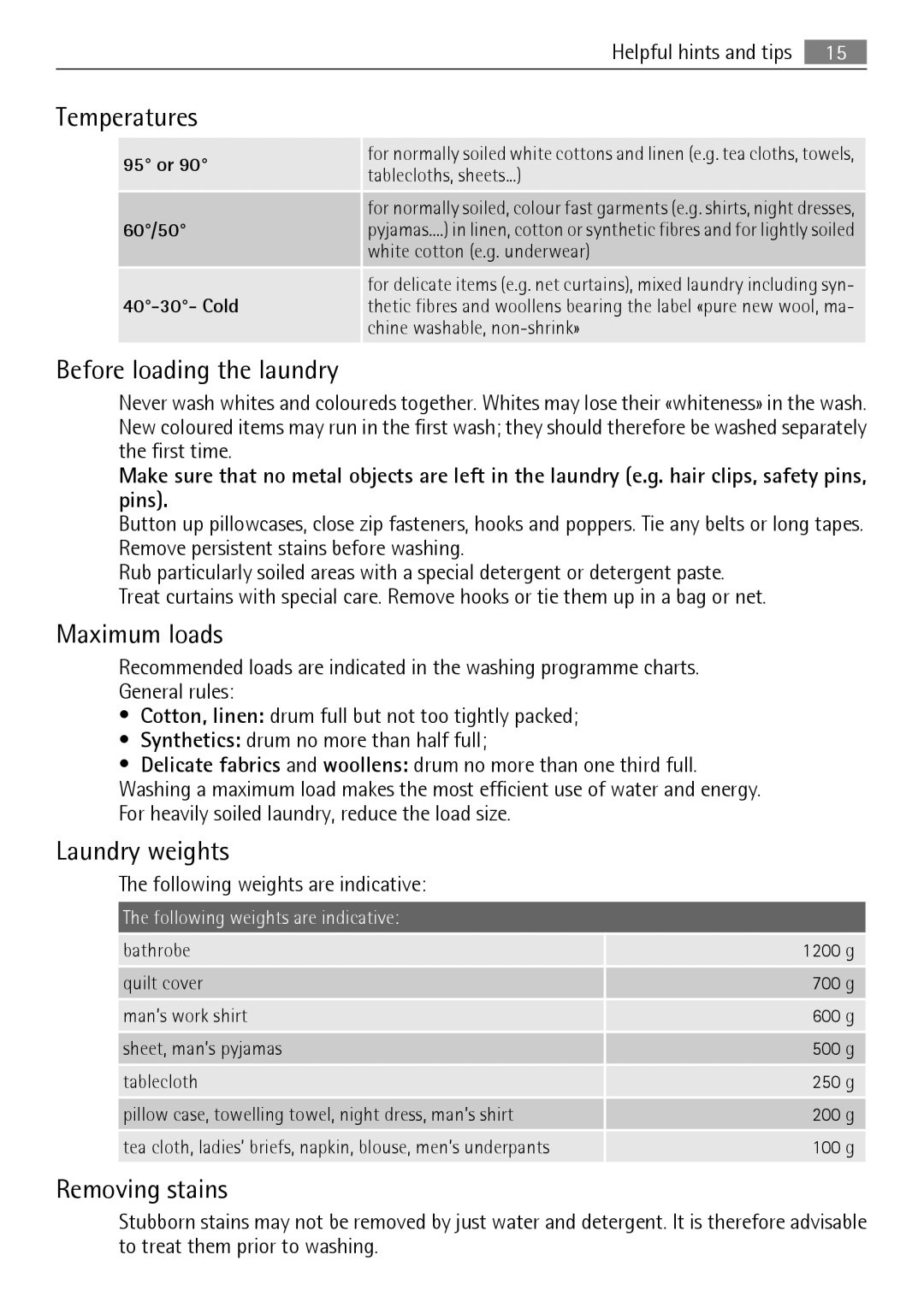
Helpful hints and tips | 15 |
|
|
Temperatures
95° or 90°
60°/50°
40°-30°- Cold
for normally soiled white cottons and linen (e.g. tea cloths, towels, tablecloths, sheets...)
for normally soiled, colour fast garments (e.g. shirts, night dresses, pyjamas....) in linen, cotton or synthetic fibres and for lightly soiled
white cotton (e.g. underwear)
for delicate items (e.g. net curtains), mixed laundry including syn- thetic fibres and woollens bearing the label «pure new wool, ma- chine washable,
Before loading the laundry
Never wash whites and coloureds together. Whites may lose their «whiteness» in the wash. New coloured items may run in the first wash; they should therefore be washed separately the first time.
Make sure that no metal objects are left in the laundry (e.g. hair clips, safety pins, pins).
Button up pillowcases, close zip fasteners, hooks and poppers. Tie any belts or long tapes. Remove persistent stains before washing.
Rub particularly soiled areas with a special detergent or detergent paste. Treat curtains with special care. Remove hooks or tie them up in a bag or net.
Maximum loads
Recommended loads are indicated in the washing programme charts.
General rules:
•Cotton, linen: drum full but not too tightly packed;
•Synthetics: drum no more than half full;
•Delicate fabrics and woollens: drum no more than one third full. Washing a maximum load makes the most efficient use of water and energy. For heavily soiled laundry, reduce the load size.
Laundry weights
The following weights are indicative:
The following weights are indicative:
bathrobe |
| 1200 g |
|
|
|
quilt cover |
| 700 g |
|
|
|
man’s work shirt |
| 600 g |
|
|
|
sheet, man’s pyjamas |
| 500 g |
|
|
|
tablecloth |
| 250 g |
|
|
|
pillow case, towelling towel, night dress, man’s shirt |
| 200 g |
|
|
|
tea cloth, ladies’ briefs, napkin, blouse, men’s underpants |
| 100 g |
|
|
|
Removing stains
Stubborn stains may not be removed by just water and detergent. It is therefore advisable to treat them prior to washing.
